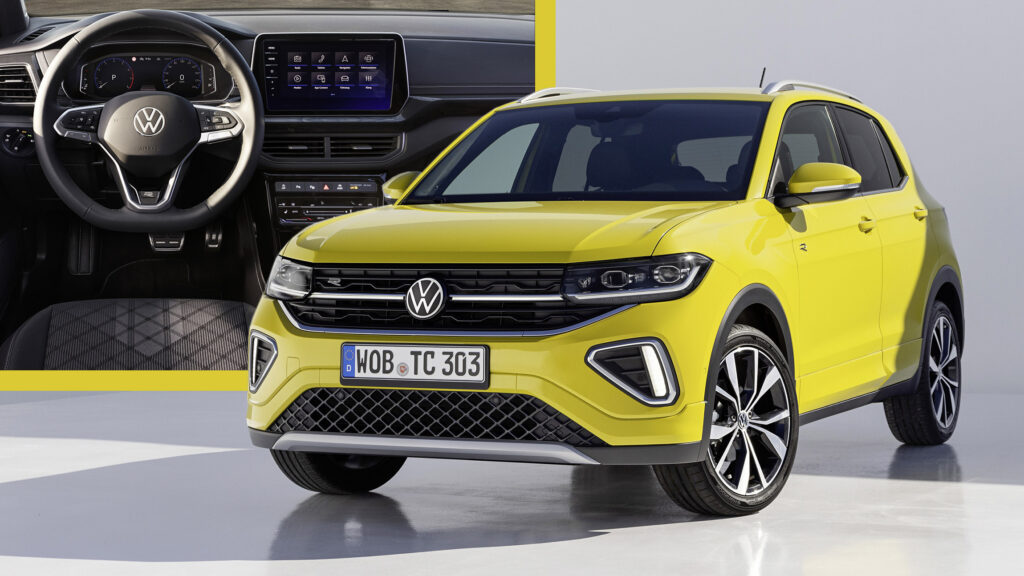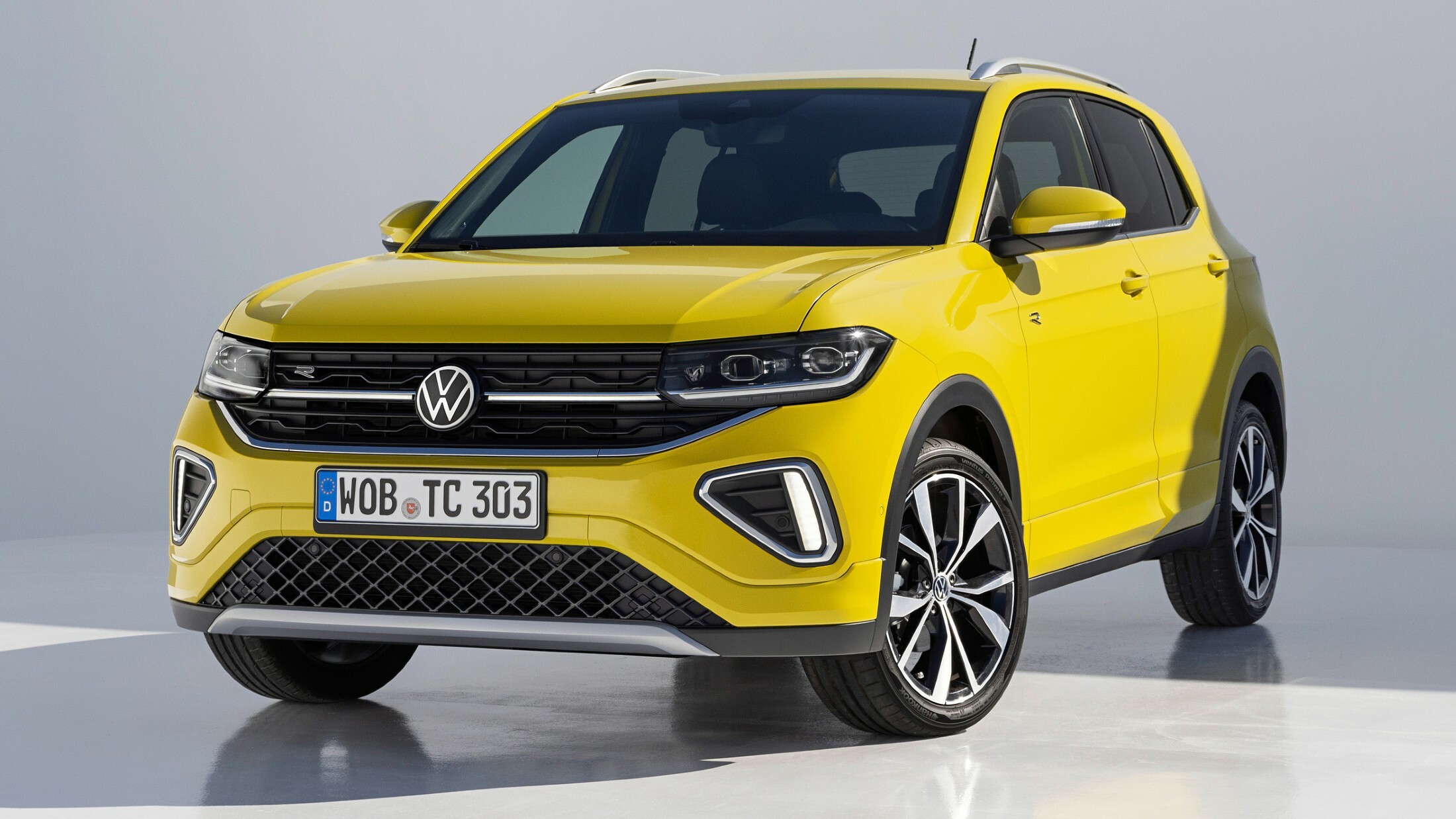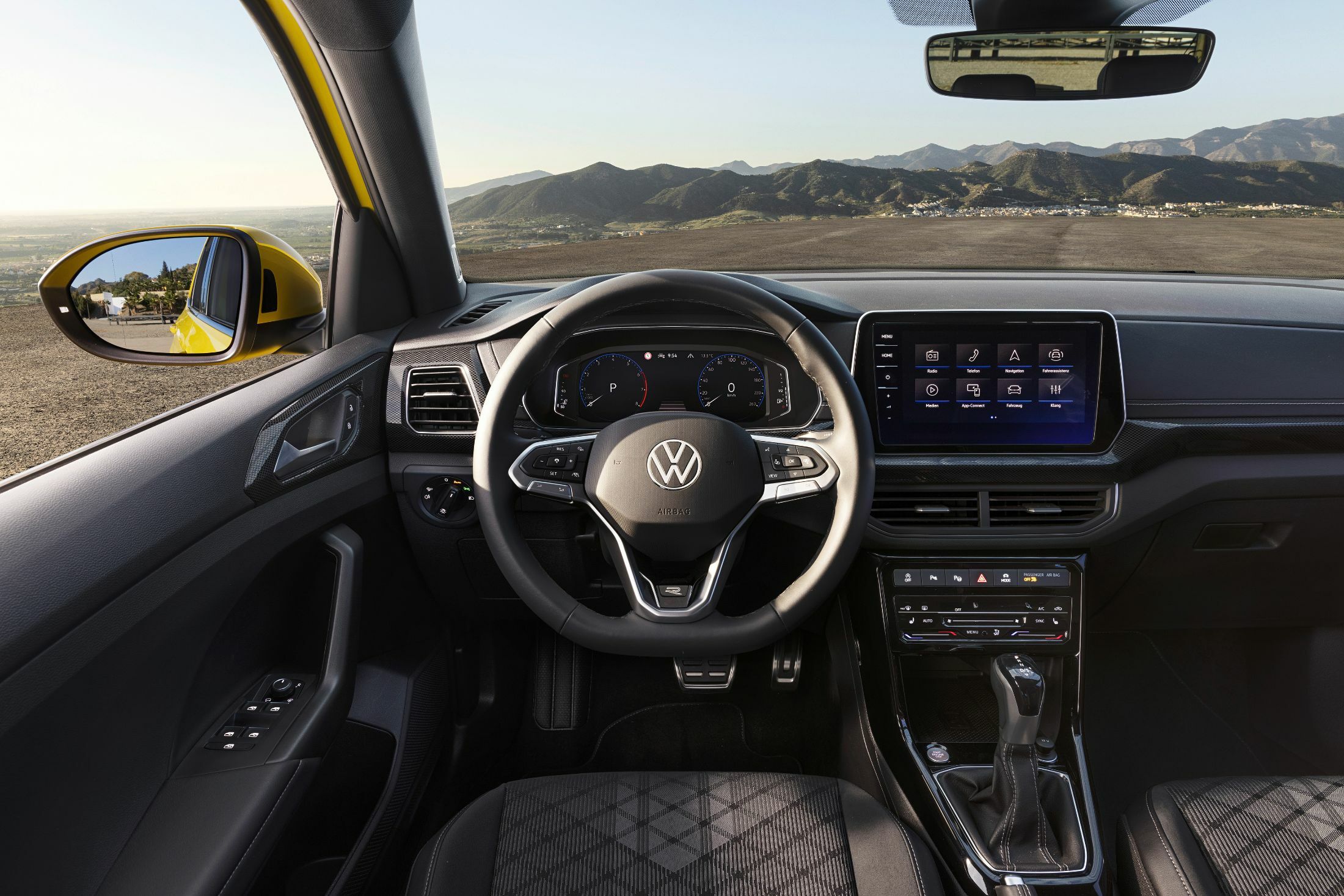Volkswagen took the wraps off the facelifted T-Cross, injecting the smallest member of its SUV range with fresh styling cues and an overhauled interior, four years after its original debut.
In the official press shots, VW only showed the sportier R-Line trim but we have already seen prototypes of the T-Cross without camouflage so we are familiar with the styling changes on the lesser models as well.
At the front, the wider grille has a full-width LED bar that replaces the old chrome stripe and connects the headlights that feature IQ.Light LED Matrix technology. The redesigned bumper gets more modern triangular-shaped side openings and a less complex setup for the lower intake. The body-colored bumper add-ons on the pictured model are specific to the R-Line, as the lower-spec trims get more plastic cladding and an aluminum-style trim around the intake that resembles a skid plate.
More: Everything We Know About The 2024 VW Tiguan
The profile is largely unchanged setting aside the new 16-inch and 17-inch alloy wheels and the trio of new shades – Grape Yellow, Clear Blue Metallic, and Kings Red Metallic – expanding the color palette. At the back, the highlight is the fancy X-shaped LED graphics on the taillights and the full-width LED bar in the middle. The lower portion of the rear bumper has also been revised with a wide faux inlet in the R-Line and no visible exhaust pipes.
Significantly Improved Perceived Quality Inside The Cabin
Moving inside, changes are more evident, as the entire dashboard has been redesigned. The hard scratchy and cheap-looking plastics which were admittedly the weakest point of the outgoing model have been replaced by softer and, according to VW, “significantly higher-quality” materials. The technology aspect has been upgraded accordingly with a new digital cockpit.
More specifically, the digital instrument cluster now comes standard, although its size ranges between 8 inches and 10 inches depending on the trim level. The infotainment touchscreen is positioned higher measuring 8 inches or 9.2 inches while benefiting from updated software. The climate controls are also revised with touch sliders in the optional Air Care Climatronic instead of rotary dials. Last but not least, the small SUV is now optionally available with the Travel Assist ADAS.
VW is proud of the practicality traits of the T-Cross including the sliding rear bench, the flexible luggage compartment ranging between 385-455 lt (13.6-16.1 cubic feet), and the drawbar load which has been increased from 55 kg (121 lbs) to 75 kg (165 lbs) so you can carry more bikes on a carrier.
The VW T-Cross is the high-riding brother of the Polo supermini, riding on the same MQB-A0 architecture. The powertrain lineup is carried over from the pre-facelifted model which means that the T-Cross doesn’t get any electrified options unlike most of its rivals. The turbocharged 1.0 TSI three-cylinder petrol is available with 94 hp (70 kW / 95 PS) or 113 hp (85 kW / 115 PS), while the more potent turbocharged 1.5 TSI four-cylinder makes 148 hp (110 kW / 150 PS). Power is transmitted to the front axle through a 5-speed manual, a 6-speed manual, or 7-speed DSG automatic which comes standard on the most powerful variant.
The market launch of the updated VW T-Cross is scheduled for the first quarter of 2024, with pre-sales starting in the fourth quarter of 2023. The small SUV is also offered in markets outside Europe under the names Tacqua and Taigun, with 1.2 million accumulative sales since its debut in 2019. Rivals in Europe’s B-SUV segment include the recently facelifted Peugeot 2008, the soon-to-be facelifted Renault Captur and Ford Puma, as well as the mechanically-related Skoda Kamiq and Seat Arona.







































